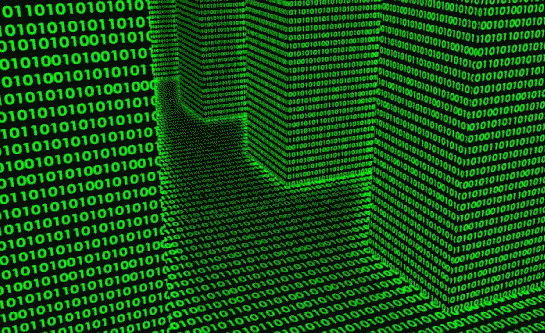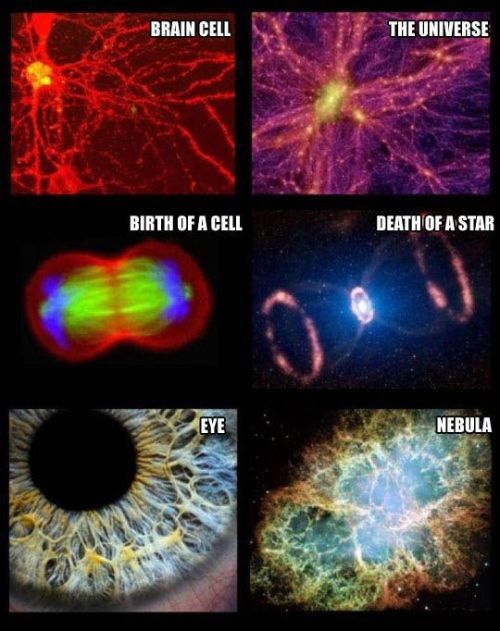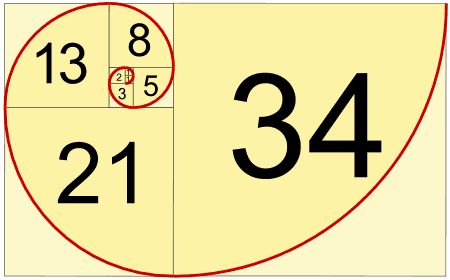
To understand is to perceive patterns.
Patterns constitute the ultimate story of our world. They’re there to tease us – to tell us that there’s something we don’t fully understand yet.
These patterns represent something greater. They represent the mechanics behind how our universe works and hold clues invaluable in answering some of life’s most interesting questions.
The reason these patterns are important is because they tell us where to look. If we can’t explain why two completely separate things are very similar, it shows we don’t fully grasp what’s going on.

Only by identifying and grouping these patterns can we start analyzing and learning about the underlying mechanics governing these systems.
True understanding & comprehension comes when enough dots become connected and you finally see the big picture. The big world becomes small. Distance vanishes & everything is interconnected.
The more you understand, the more you see these patterns – the more obvious they stand out.
The key to understanding life may be found in understanding these patterns – in relating these disparate subjects and finding a thread of commonality.
If we can understand this stuff, we can control it. We can invent new things. This is why it’s important to understand these patterns – it gives us the ability to unlock the universe.
Patterns

You can think of it like cooking a dish of food – you start with simple ingredients, simple rules. Then you need enough of those simple materials in order create a more complex dish. The combination of these ingredients creates a new, object of higher order & complexity. Butter + Bread + Cheese = Grilled Cheese.
It’s interesting that all of theses systems share similar rules:
1. They’re built from a collection of lower, simpler “Building Blocks”
2. As they evolve & reach pique efficiency – they start to look the same.
3. Any single node can stop functioning, but the overall larger system stays in tact.

Examples:
– Cells make up tissue which make organs which make systems that work together to create humans.
– Similarly organized is our universe – Suns make up galaxies which together form nebula which work together to create our universe.
Even systems that we’ve created on our own operate with a similar type of organization and heirarchy:
– Binary code builds into more complex languages which work together to form a comprehensive graphical user interface which we call a Computer.
– Single users sign up and start following other users to create cohorts which together work in harmony to create a Social network.
Not only do these very different systems all follow a similar logical structure, but they all LOOK the same as well.
The brain is probably the most complex organically evolved that we know. The observable universe is probably the most complex thing we know exists. Despite being on two completely different scales of reality – these two things are structured in a remarkably similar way.
In addition – a single node can stop functioning, but the overall system stays in tact.
If one of your cells dies, your human is still okay. If one user leaves a social network, it stays alive. One lightpole can go out on a elecrtrical grid but the system at large still works. If one human dies, the larger system of humanity is unaffected.
You can lose a sun, or an entire galaxy and the universe goes unaffected.
Fibonacci Sequence:

The Fibonacci sequence is amazing. It’s another one of these patterns that is omnipresence throughout the universe at different scales of reality. The Fibonacci Sequence is also known as the Golden Ratio.
The sequence itself is: 0, 1, 1, 2, 3, 5, 8, 13, 21, 34, 55 and so on to infinity. Each number is the sum of the two numbers that precede it. It’s a simple pattern that seems to pop up whenever things reach an extreme level of effiency.
Another interesting pattern within the fibonacci sequence is called The Golden Mean or The Divine Proportion. You reach the golden mean by taking each number in the series and dividing it by the previous number.
At first everything looks normal. One divided by one is one. Two divided by one is two. Three divided by two is 1.5.
As the sequence increases, an interesting pattern emerges. Five divided by three is 1.666. Eight divided by five is 1.6. Thirteen divided by eight is 1.625. Twenty-one divided by thirteen is 1.615.
As the series continues, the golden mean approaches the number 1.618 getting increasingly close, but never quite reaching that ratio.
The reason this is interesting is because this number 1.618 is actually found everywhere in works of art, nature, architecture, and in many systems who’s underlying laws seem to govern our universe.
The Greeks used the 1.618 proportion to construct The Golden Rectangle. It was a rectangle with sides measuring one and 1.618 (or with side measuring to consecutive Fibonacci Numbers). This was considered the most mathematically beautiful structure, and frequently used in architecture.
Examples of Fibonacci Sequences in Nature:
Hurricane:

Egg:

Spiral Galaxy:

Human Face – Eyes & Mouth:

Greek Architecture:

Human Arm Length Ratio:

Spiral Shell:

Evolution:

In general we think of evolution as a process which describes how we started as little bacteria and ended up as sentient humans. Evolution is much more than that.
All systems undergo evolution – it is a constant that goes hand in hand with time. As outside forces act on an object, it evolves. It erodes, it adapts, it changes.
Even with radically different applications, all systems that evolve tend to operate with the same basic mechanics.
Evolution is a process that creates a similar pattern of increasing order & complexity through constant iteration and problem solving.
There is a hierarchal organization structure that is repeatibly found throughout evolving systems in our universe.
Evolution works through indirection: each stage uses the information-processing methods of the previous to create the next.
A byproduct of evolution is order & organization – things fit nice and neatly together (or they get killed off).
Evolution is one of the patterns that recurs across different scales of reality. From the cosmic & universal scale, to the cellar & atomic scale. The infinitely big, and the infinitely small.
In particular, Human evolution took millions of years – slowly iterating and increasing in complexity.
Ray kurzweil organizes our human “evolution” into Epochs, each next level describing a paradigm shift in information organization and storage.
Epoch 1: The most basic level of organization we know is physics & chemistry which stores information in atomic structures.
Epoch 2: Biology, or information stored in DNA.
Epoch 3: Brains, or information stored in neural patterns.
Epoch 4: Technology, where information is stored in human created hardware & software tools.
Epoch 4 is what we’re living through today. We’ve created technologies that allow us to outsource large parts of our biological mental capacity to technology. (mental math vs. calculator)
This pattern of evolution described by Kurzweil is a constant throughout our universe and is not isolated to human evolution.
Within Epoch 2 you have many sub-evolutions that are organized in the same exact way. Cells make up tissue which make up organs which make up organ systems which work together to create a living animal.
Our society evolves. Our relationships evolve. Our personality evolves. Our startups evolve. Everything evolves, and they all follow a similar process.
Human invented technology , which also follows this similar evolutionary structure of increasing order and complexity – no matter where you look.
Take computers for example. We started with binary, just simple 0’s and 1’s. These are our building blocks. Our atoms. We then built GUI’s so we could translate all those 0’s and 1’s into pretty pictures on the screen. From there created different computer programming languages. These new languages were built on top of the basic binary and make it much easier to create complex programs with simple inputs.

Why is it that the growth cities look identical to the growth of neurons. The same neurons that look exactly like the universe.
“At first glance they seem to be quite different systems, the question is, is there some kind of controlling laws that can describe them?
The eerie similarity between networks large and small is unlikely to be a coincidence. For a physicist it’s an immediate signal that there is some missing understanding of how nature works.” – Krioukov

Even the way we came to exist and where we’re going follows this similar evolutionary pattern. Ray kurzweil describes further epochs, ones we’re living through now and ones we will encounter in the future if we stay on this similar evolutionary course.
Epoch 5: The merger of man and machine. This is where we merge human technology with human biology. This merger will create a higher form of life and intelligence.
Epoch 6 is what is known as the singularity – the flourishing of biotechnology and nanotechnology. We impregnate the universe with intelligence and merge with all of the matter – the universe “wakes up”.
Networks:

“Natural growth dynamics are the same for different real networks, like the Internet or the brain or social networks,” said study co-author Dmitri Krioukov, a physicist at the University of California San Diego.
The more efficient technology gets, the more it looks like nature. The reason this is so is because nature has already gone through the process of optimizing for efficacy. As our man made systems reach higher levels of efficiency, they start to mimic the designs nature has already iterated through.
This must mean that there is some underlying law that governs all of these processes. 
As basic building blocks start to group together, networks emerge, which operate under a very specific pattern as well. The image above that shows a neuron looking like a universe exists because they evolved using similar systems, following similar laws. At a certain point when they had enough nodes, they entered a network dynamic.
The network dynamics are interesting because they work the same way our evolved systems work. If you lose one node, the overall system stays in tact. This is a lot like our cells, or computer code, or the universe.
The highest level of organization and complexity is made up of many lower level components. Because of this, you can lose a few lower level components, and it doesn’t harm the overall system.
Depending on your perception and framing of , many things can be the highest level of organization.
One could say that a human is the highest level of organization, but that could also be wrong. If you look at humanity as a whole, that creates a network as well.
If you lose one human, the rest of humanity still exsists. It could be that an individual person is unimportant in and of themselves. They exist to serve the greater network of humanity.
The way someone could influence the network is by influencing many nodes – getting them to collectively change. This is one way for a single person to move from a insignificant node, to a influential hub.
Humans & Learning:

Learning is another interesting pattern which operations the same way as evolution. Your learning evolves.
You’re born and know nothing – your dataset is empty. As you experience things through your senses (sight, taste, touch, hearing) you begin to form your idea of the world.
The situations in which you experience things at an early stage are extremely important – this is your frame of reference for the rest of your life. The lens you will view your life out of. The lens that you’ll use to make decisions.
Every time you process information it will go through your own customized lens, a combination of everything you’ve ever gone through, learned, and experienced.
As you move through life and experience things the dots start connecting and you start seeing how everything is related. How you dress, how you act, – all of these things affect how other people perceive you and how they relate to you
Emotions are also another interesting part of your lens. Emotions allow you to pull a different conclusion from the same event, depending on your emotional state. Mastery of ones emotions can be used for compassion – understanding how someone else might feel in a particular situation by understanding your own past emotions.
It’s possible that emotions are our “built in” set of perceptions that we can pull from. As you grow you learn to control and understand your emotions to the point where you’re not at the mercy of any one of them – you can understand what it would be like to be angry or sad or happy in any situation and use all of those perceptions to figure out the best way to move forward.
Humans are a very complex code. The complexity of our brain is called psychology.
A human is a very complex system of inputs and outputs – the inputs being every single experience, thought and idea a person has had, and the output being the response you get from adding another input.
Closing:
I’m very interested in hearing what other patterns people have seen out in the wild. I would very much like to have a discussion on this and see how many patterns we can put together.
A lot of things work very similarly, and if we have a bunch of eyes out looking for pieces to the puzzle, we should be able to learn more, much faster.
– J



Beavis
Oct 13, 2013 -
We usually use around 7% of our brain, and 15-20% of our body potential. We “evolve” according to our needs, so if this much is enough, why do we have such enormous potential hidden in us?
Jon
Oct 16, 2013 -
We only use a small portion of our brains at any given moment, but during the course of the week and probably even just in a single day we will have used 100% of our brain. We don’t use our bodies full strength potential because that would destroy our muscles beyond repair very quickly.
Steven
Aug 29, 2020 -
If we only use 7% of our brain, we could cut out the other 93% and toss it out. You might want to reconsider instead of parroting and old husband’s tale.
supernerd567
Oct 13, 2013 -
Please answer my question! I have been wondering where the FIbonacci sequence appear in nature? I’ve asked if animals have anything to do with the sequence, and so far, my answers have been shot down! One of the people who answered told me that: animals have nothing to do with this sequence, so my only question after that was: Where? Where does this sequence appear in nature, if not in animals?
homerliveshere
Oct 13, 2013 -
I’m sorry I know a lot of people have asked this question, but I just need to right now.
One particular thought keeps bothering me – the idea or concept of the infinity of the Universe. Is this normal? Today has been particularly disturbing for me and has prompted me to put this up. I just could not control my mind from thinking about the infinity of the Universe. A particular thought scares me, viz. once somebody had said that if one tries to fathom the infinity of the Universe, all the blood vessels and nerves in his brain will burst! I know this can’t be true but I cant help but stop my mind from thinking about this. Am not able to control my thoughts, what do I do?
Background:
I’ve been suffering from anxiety/panic disorder for about 6 years now. I went through cognitive behavioral therapy (CBT) and am also on anti-anxiety medication (clonazepam 0.5 mg) and also some homeopathic medicine. Up until December 2011, I was quite successful in coping with my anxiety. But from January this year, I’ve had several panic attacks which I thought I never would because I was coping well. The past one year was slightly stressful because I had a court case to attend to. Now, the anxiety itself is not so much of a botheration for me as is controlling my thoughts.
Sometimes I feel I cannot rationalize (as is taught in CBT). I know a few god ways to ward off negative thoughts, but when I’m in a situation as described, nothing seems to work.
@Leanne: I am trying to do as you have described, but every time I try to think positively, I’m drawn more and more into my obsessive thoughts, like quicksand. Like I said, I’m on anti-anxiety medication – 1 pill every morning. I took it today when I woke up and my thoughts are in control, although a slight inner fear of going through what I did yesterday, kind of pulls me down. In CBT we’re told to ‘observe’ ourselves, which I am doing, because I believe that since my mind is in control after having taken the pill, it is definitely the anxiety which is causing my mind to be hyperactive (as if I didn’t know that already, lol). I’m planning to get in touch with my therapist as well. Maybe I need to use the emotional freedom technique as you said.
Jeremy Xargor is my gamertag
Oct 13, 2013 -
I have a project due this week and i need 5 facts on the Fibonacci Sequence.
Help!
Con Orpe
Oct 13, 2013 -
what is the formula to find the nth term of the fibonacci sequence?
the one with the square root and stuff.
if anyone knows, pls tell me!!
thank you!!
Jeffery Carlson
Oct 13, 2013 -
He believes that scientists are exploring the possibilities of a 5th dimension that parallels ours. According to him, they have come close to unlocking the secret to this Parallel universe, and there is even documentation of an individual who claimed to be a time traveler from about 30 years in the future. He says that the individual held several internet conferences about 5 -1 0 years ao, then disappeared as mysteriously as he appeared. Has anyone heard anything like this, or is it simply just a bunch of ‘after dark radio’ mumbo jumbo??
Leigh Mortensen
Oct 14, 2013 -
All of your images are hotlinked. You should fix that before they all get replaced with gore and porn.
juliansarokin
Oct 14, 2013 -
Ah you’re right!
I’ll go through them tonight and upload them all to my own servers.
Thanks for the heads up!
– J
Leigh Mortensen
Oct 15, 2013 -
no problemo
Joe
Oct 20, 2013 -
This entire article seems to be focused on trying to explain one thing which is never mentioned: emergence. It’s a new branch of scientific understanding. Radiolab did a very good piece about it. You can listen to it here: http://www.radiolab.org/story/91500-emergence/ . Self-forming complex systems do not make up rules but combine and amplify underlying structures.
Good article!
Gabe T
Dec 5, 2013 -
Stumbled on your site while reading up on NXT and was surprised to find someone with the same interests and understandings! Seems we’re following similar patterns except I have 2 years on you and you have a few start ups on me; we even went to nearby schools (I’m still at the University of Illinois finishing up my CPA). Highly recommend Godel, Escher, Bach – MIT did a free online course on it so it’s right up your alley. Keep fighting the good fight!
Julian Sarokin
Dec 5, 2013 -
haha Awesome!
Would love to chat more about cryptos (& NXT) – you have a gchat?
– J
Fractals – The Hidden Dimension by Julian Sarokin
Mar 23, 2014 -
[…] This ties into a previous post I wrote called: Patterns: Unlocking the Universe […]
Patterns: Unlocking the Universe – Part II – Julian Sarokin
Apr 30, 2014 -
[…] Part 1: http://juliansarokin.com/patterns-unlocking-the-universe/ […]
Shahzaman Mozumder
Oct 8, 2016 -
I read your article with lot of interest. I think that the universe is made of only a few basic patterns and these patterns keep on repeating everywhere. Why that happens I don’t know. Pythagoras was the first to notice these patterns. I have been a computer programmer at the beginning of my career and sometimes it seems that the universe to be a simulation with n-1 degrees of freedom.
Rayon
Jan 17, 2017 -
This is way awesome .. I thought of writing my own blog on universe and the patterns .. And looks like I got the perfect reference .. I loved the explained everything so simply ..
Gerald Gifford
Dec 18, 2017 -
Great article. But I have to take issue with one statement in your piece. You stated, “You’re born and know nothing – your dataset is empty. As you experience things through your senses (sight, taste, touch, hearing) you begin to form your idea of the world.”
You are ignoring {or are ignorant} of Jung’s archetypes. The definition of Jung’s archetypes is;
‘Archetypes are universal, archaic patterns and images that derive from the collective unconscious and are the psychic counterpart of instinct. They are inherited potentials which are actualized when they enter consciousness as images or manifest in behavior on interaction with the outside world.’
A small correction perhaps but an important one when it comes to patterns. They do fit with your hypothesis though. Especially in dream analysis {my expertise}. As well as mythology which shares the archetypes and patterns they represent and support.
Danica
Jan 30, 2019 -
ratio of water to body mass = earth ocean to land mass